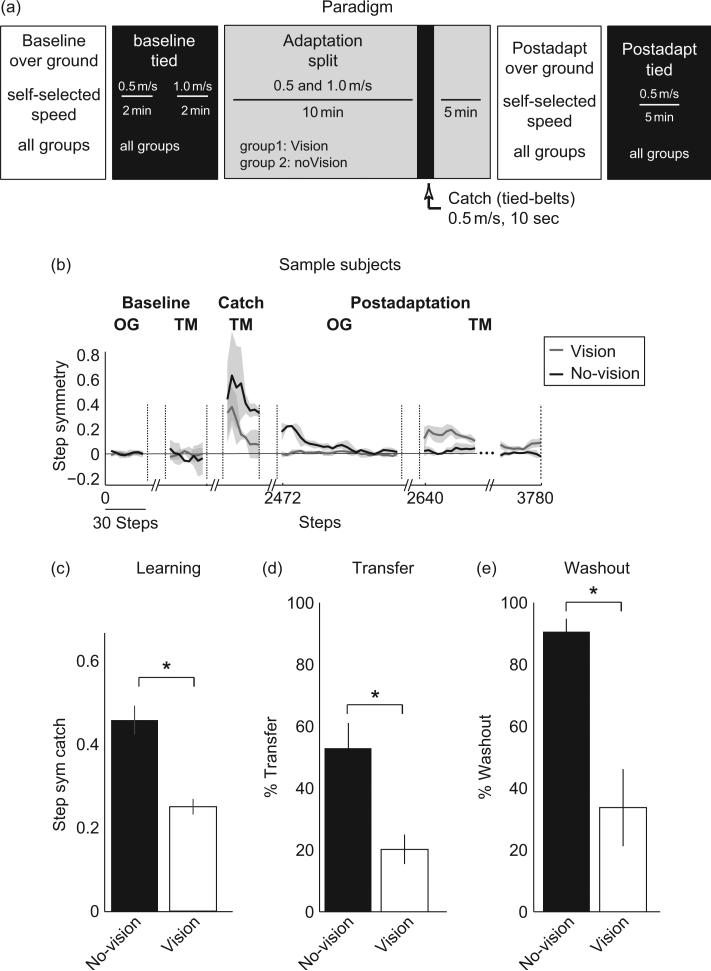Fig. 4.
(a) Overall paradigm. In all groups, baseline behavior was recorded overground (OG) and subsequently on the treadmill with the two belts moving at 0.7 m/s. Then subjects were adapted for a total of 15 min, during which one belt was moving at 0.5 m/s and the other belt at 1 m/s. After 10 min of adaptation, a 10-s catch trial was introduced, in which both belts moved at 0.7 m/s. Subjects were readapted (i.e., belts’ ratio at 2:1) for five more minutes before they were asked to walk OG, where we tested the transfer of treadmill adaptation to natural walking. Subjects were transported on a wheelchair to a 6-m walkway where they walked back-and-forward 15 times. All steps on the walkway were recorded except for those when subjects were turning to return to the initial position. Finally, subjects returned to the treadmill where they walked for 5–10 min at 0.7 m/s to determine form the remaining aftereffects the extent to which walking without the device washed out the learning specific to the treadmill. (b) Spatial symmetry (i.e., symmetry in step lengths of the two legs) of sample subjects of the vision and no-vision group when walking on the treadmill (TM) and OG during baseline, catch, and deadaptation periods. Behavior of two sample subjects is shown: one walking with vision (gray trace) and one walking without vision (black trace). Lines represent the running average using a three-step window±SD (shaded area). No differences in step symmetry were observed preadaptation when subjects walked with and without vision on the treadmill or OG. However, the subject that walked without vision had larger aftereffects on the treadmill during the catch trial (i.e., more learning), more transfer of treadmill learning to OG walking, and more washout of learning specific to the treadmill than subject that walked with vision. (c) Aftereffects on treadmill during catch trial for vision and no-vision groups. Subjects that trained without vision had significantly larger aftereffects—greater learning, than subjects that trained with vision. Bars’ height indicates the averaged aftereffects of the first three steps during the catch trial across subjects±SE. (d) Transfer of adaptation effects to OG walking. (e) Washout of treadmill spatial aftereffects following OG walking. Removing vision during training had a significant effect on the washout of step symmetry aftereffects specific to the treadmill. Step symmetry transfer and washout are expressed as a percentage of the aftereffects on the treadmill during catch. Bars’ height indicates the average across subjects±SE of % transfer and % washout for the first three steps OG or when returning to the treadmill. Figures in all panels were adapted from Torres-Oviedo and Bastian (2010). *p<0.01.

